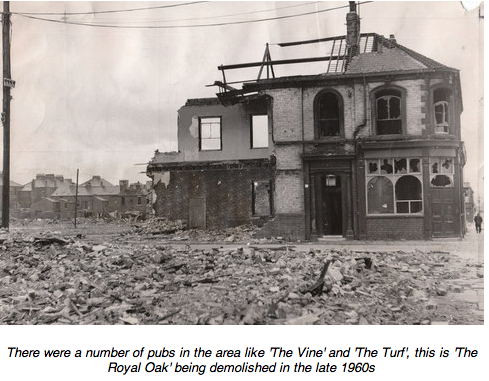My first two books have faraway locations – a great excuse for combining research with holidays. I thought I was joking at first when I began to tell people novel number 3 would be set in Middlesbrough. For a start I’d never set foot in the place – and had never entertained the slightest desire to do so – but more importantly I knew absolutely nothing about it other than my preconceived ideas of it being a post-industrial wasteland. Then I started to research my family tree and to my surprise discovered my great grandfather lived there and my Granny was born there – a fact no one in the family had mentioned (I’d always believed they came from Scotland). As I researched my great grandfather – he was a teacher but also had a period running a pub – I became increasingly curious and wondered whether some of the background elements to his story (teaching, Catholicism, the pub location) could be interesting material for me. Still not completely convinced, I planned to transplant these ideas to the USA – but something kept pulling me back to Middlesbrough.
My research started with Asa Briggs’ book Great Victorian Cities. This was the first eye-opener – why had he picked boring old Middlesbrough along with Birmingham, Melbourne, Manchester and Leeds as one of the five examples of great Victorian cities? I discovered the extent of my ignorance! – the iron and steel produced there ended up across the planet and led to a growth unmatched by any other British town. Dorman Long of Middlesbrough built the Sydney Harbour Bridge, the Tyne Bridge, as well as several across Africa and one in China. My great grandfather first appears in the town in the 1881 census – when he was 28 and a teacher with 2 daughters. At that time the population was 55,934- a massive increase on the 154 people who lived there in 1831 soon after it was founded. Over the subsequent 20 years the town’s population grew to 91,302. (Today it’s 142k)
All this rapid growth, particularly among iron workers, keen to locate as close as possible to their work, resulted in overcrowding, poor sanitation and consequent social problems. My great grandfather, as a publican, would no doubt have been the beneficiary of the excessive alcoholism in the town – which was matched by a strong Temperance movement – including a Temperance Hall that seated 2000. A fascinating volume, At The Works (1907), by Lady Bell, the wife of Sir Hugh Bell the town’s greatest iron founder, details the lives of the workers and is based on a study undertaken by herself and other lady “visitors” among the homes of around 1000 iron workers and their families. This even details item by item, how individual households spent their weekly income, often having to balance the need for coal with the need for basic food ingredients. The prosperity or lack of it in any home was as much dependent on the budgetary management of the wives as on the earnings of the husbands – and on how much of the wages reached the wives before being absorbed by pubs and bookies. Lady Bell paints a vivid and moving picture of conditions in these “2 up, 2 down” terraces, with women worn down by constant childbirth, housework and hunger. In these pre NHS days, those families that did not pay into a sick fund would have no income at all if the breadwinner was injured or sick and the consequent impact on their lives was catastrophic.
So, having come somewhat reluctantly to the decision to use Middlesbrough I am now excited and looking forward to my first research trip there. Not that there will be much of old Middlesbrough to see – the Victorian slums were flattened in the 1960s – including my great grandfather’s pub, The Royal Oak – shown here as the bulldozers moved in.



0 Comments